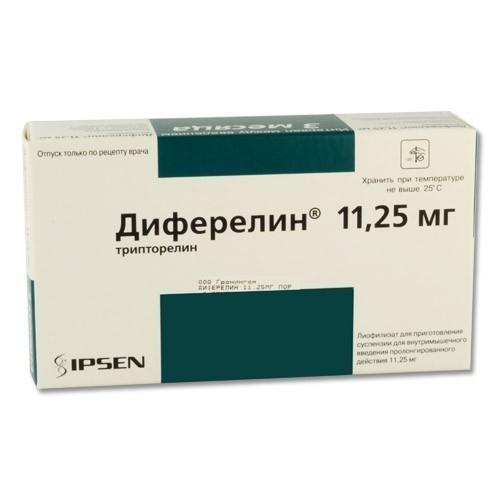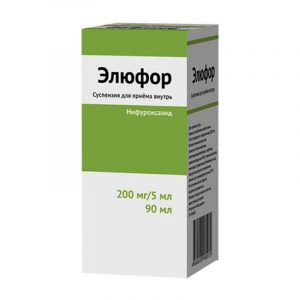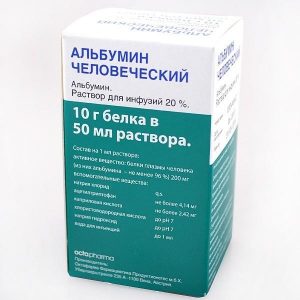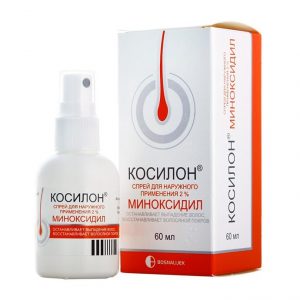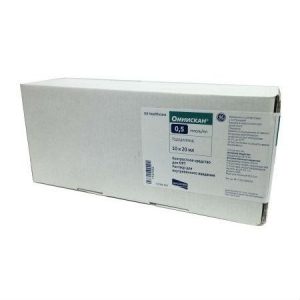Description
Latin name
Diphereline
Release form
Lyophilisate for suspension for v / m administration of prolonged action.
Indications
Prostate cancer: treatment of locally advanced prostate cancer in monotherapy or as an adjuvant against radiation therapy
treatment of metastatic prostate cancer.
Genital and extragenital endometriosis (stages I-IV).
Contraindications
Hypersensitivity to triptorelin, other components of the drug, or other GnR analogues.
In men: hormone-independent prostate cancer, a condition after a previous surgical testiculectomy.
In women: pregnancy
lactation (breastfeeding).
Caution: the drug should be prescribed for osteoporosis, women with polycystic ovary syndrome.
Use during pregnancy and lactation
Diferelin ® is contraindicated in pregnancy and lactation (breast-feeding).
Since there is no data on the excretion of tryptorelin in breast milk and its possible effects on a breast-fed baby, treatment with Diferelin ® should not be carried out during breast-feeding.
According to available data, no teratogenic effects were found in experimental animal studies. In isolated cases of the use of GnRH analogues (by negligence), no defects in fetal development and fetotoxicity were found.
Composition
1 vial contains:
Active ingredient: triptorelin acetate, calculated on the basis of triptorelin 11.25 mg *.
* – taking into account the characteristics of the dosage form, the drug contains an excess of the active substance to ensure the introduction of an effective dose.
Excipients: copolymer of D, L-lactic and glycolic acids – 250 mg, mannitol – 85 mg, sodium carmellose (sodium carboxymethyl cellulose) – 30 mg, polysorbate 80 – 2 mg.
Solvent: mannitol – 16 mg, water d / i – up to 2000 mg.
Dosage and administration of
For prostate cancer, Diferelin ® is administered IM in a dose of 11.25 mg every 3 months. When treated in combination with radiation therapy, long-term antiandrogen therapy (3 years) is preferable to short-term antiandrogen therapy (6 months).
With endometriosis, the drug is administered IM in a dose of 11.25 mg every 3 months. Treatment must begin in the first 5 days of the menstrual cycle. The duration of treatment depends on the severity of endometriosis and the observed clinical picture (functional and anatomical changes) during therapy. As a rule, treatment is carried out for 3-6 months. It is not recommended to conduct a second course of treatment with triptorelin or another GnRH analogue.
Rules for the preparation of suspension
Dissolution of the lyophilisate in the supplied solvent should be carried out immediately before administration. Mix the contents of the vial with caution until a homogeneous suspension is obtained.
Cases of incomplete injection resulting in the loss of more suspension than usually remains in the injection syringe should be reported to your healthcare provider.
Introduction should be carried out in strict accordance with the instructions.
Patient should be prone.
Disinfect the buttock skin.
Break the neck of the ampoule (dot on the front side of the top).
Put the solvent into the syringe with the needle.
Remove the green protective plastic cap from the top of the vial.
Transfer the solvent to the lyophilisate vial.
Pull the needle so that it remains in the vial but does not touch the suspension.
Without turning the bottle over, gently shake the contents until a homogeneous suspension is obtained.
Check for agglomerates before how to draw the suspension into a syringe (in the absence of agglomerates, shake until completely homogeneous).
Without turning the bottle over, draw the entire suspension into the syringe.
Remove the needle used to prepare the suspension and firmly attach the other needle to the tip of the syringe. Hold on to the color tip only.
Remove air from the syringe.
Inject a gluteus muscle immediately.
Dispose of needles in sharps containers.
Side effects
In men
At the beginning of treatment: dysuria (difficulty urinating, incomplete emptying of the bladder, soreness), bone pain, associated with metastases and compression metastases of the spinal cord, which may be aggravated due to a temporary increase in testosterone in the blood plasma at the beginning of treatment. These symptoms disappear in 1-2 weeks. Also, during this period, a temporary increase in the activity of liver enzymes in blood plasma may be observed.
During treatment: hot flashes, decreased libido, gynecomastia, impotence, which is associated with a decrease in testosterone in plasma.
In women
At the beginning of treatment: symptoms associated with endometriosis (pelvic pain, dysmenorrhea), which may be aggravated by the initial transient increase in the concentration of estradiol in blood plasma and disappear after 1-2 weeks. 1 month after the first injection, genital bleeding may occur, including both menorrhagia and metrorrhagia.
During treatment: vaginal dryness, hot flashes, decreased libido, enlarged mammary glands, dyspareunia, which is rarely associated with pituitary-ovarian blockade – headache, arthralgia, myalgia.
In men and women
Allergic reactions, such as urticaria, rash, itching and very rarely – Quincke’s edema, mood disturbance, irritability, depression, fatigue, sleep disturbances, nausea, vomiting, weight gain, profuse sweat, hypertension, paresthesia, visual impairment, pain at the injection site and fever.
Long-term use of GnRH analogues can lead to bone demineralization and is a possible risk factor for osteoporosis.
According to data collected during the use of GnRH analogues, the following adverse reactions may occur in patients: erectile dysfunction, ringing in the ears, dizziness, diabetes mellitus (hyperglycemia), abdominal pain, constipation, diarrhea, bloating, dryness of the oral mucosa, dysgeusia, flatulence, asthenia drowsiness, flu-like syndrome, anaphylactic reactions, increased activity of ALT, AST, ALP hypercreatininemia, increased blood urea, anorexia, gout, increased appetite, musculoskeletal pain, limb pain, muscle cramps, muscle weakness, dizziness, memory impairment, insomnia, confusion, anxiety, testicular atrophy, shortness of breath, orthop MA, nasal bleeding, acne, alopecia, decreased blood pressure at the injection site – erythema, inflammation, and pain.
Drug Interaction
The drug interaction of Diferelin ® has not been described.
Overdose
There are no known cases of overdose with Difrelin ® so far.
Storage conditions
Keep out of the reach of children at a temperature not exceeding 25 ° C.
Expiration
Expiration: lyophilisate – 3 years, solvent – 5 years.
Deystvuyuschee substances
Tryptorelyn
dosage form
Dosage form
solution for injection
Infamed, France
